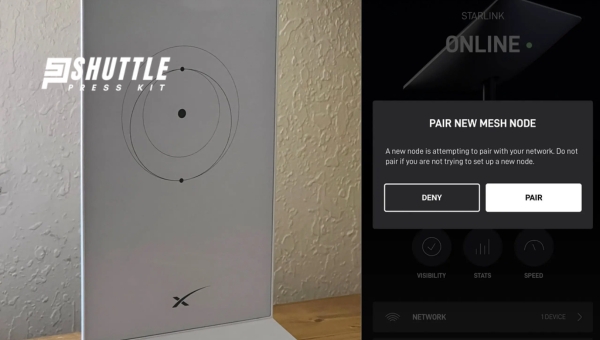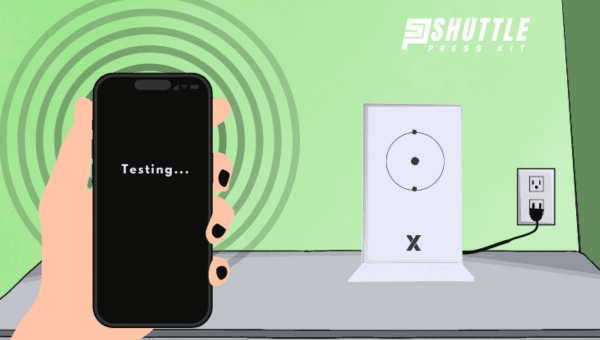Have you ever felt frustrated with dead zones in your home where wifi just can’t seem to reach? That’s exactly where a Starlink Mesh Network for Improved Wifi Coverage comes into play—transforming the way we connect to the internet and leaving no corner behind.
In this day and age, staying online seamlessly is not just a luxury, it’s a necessity. Imagine streaming your favorite show or video calling from any spot in your house without that annoying lag or disconnection! This is what I intend to help you achieve: an unstoppable, all-reaching wifi network.
So, how do you create a mesh network that pumps life into every Wi-Fi-dead space at home or in the office? First off, breathe easy – it’s simpler than it sounds. A mesh network uses multiple router-like devices called nodes. These nodes work together spreading Wi-Fi far and wide.
What is a Mesh Network?
Mesh networks employ a network design where each device, or node, connects directly to multiple others, forming a dynamic and interconnected system. This setup enables data to efficiently find the shortest and most reliable path from source to destination.
Unlike conventional networks that depend on central devices like routers, mesh networks distribute data traffic responsibilities across all nodes. This decentralized architecture enhances the network’s reliability, as it can seamlessly reroute data if any node fails, ensuring continuous connectivity without single points of failure.
The strength of mesh networking lies in its self-adapting capability; nodes in the network automatically determine and adjust to the most efficient data transmission paths as devices join or leave the network. This makes mesh networks particularly suitable for environments requiring high resilience and scalability such as smart homes, urban Wi-Fi projects, and emergency communication infrastructures.
With their capacity for self-repair and easy expansion, mesh networks are increasingly recognized as a vital solution for future-proofing wireless communication systems.
Also Read: How to Factory Reset Your Starlink Router? – Detailed Guide
Why Choose Starlink as Mesh Networking Option?
Unlike traditional internet services that rely on ground infrastructure, Starlink utilizes a constellation of satellites in low Earth orbit (LEO) to create an expansive mesh network.

This innovative approach ensures widespread coverage and reliable connectivity, marking it as an exceptional choice for consumers. Below are the key reasons why Starlink edges out its competition in mesh networking:
- Ubiquitous Coverage: One of Starlink’s most significant advantages is its ability to provide internet access in remote and underserved areas where traditional broadband services are not feasible or are inefficient. This global reach ensures that even users in rural or isolated locations enjoy fast and stable connections.
- High-Speed Internet: Despite the vast coverage, Starlink does not compromise on speed. It offers impressive download and upload speeds that rival or surpass traditional broadband services, making it a preferred option for streaming, gaming, and other bandwidth-intensive activities.
- Low Latency: The use of LEO satellites significantly reduces latency compared to geostationary satellites used by other providers. Low-latency connections are crucial for real-time applications like video calls and online gaming, providing a seamless user experience.
- Scalability: As SpaceX continues to launch more satellites into orbit, the capacity and performance of the Starlink network will only improve. This scalability ensures that it remains a robust solution capable of adapting to growing demands and technological advancements.
- Ease of Setup: The user-friendly nature of the Starlink system enables consumers to easily set up their connection with minimal hassle. The provided equipment – a phased array antenna and router – allows for straightforward installation without needing professional assistance.
Starlink’s commitment to leveraging cutting-edge satellite technology positions it as a leading contender in mesh networking solutions worldwide.
Equipment Required for Starlink Mesh Network
Mesh network with Starlink allows seamless internet access throughout a broader area without sacrificing speed or quality.

Below is a list of the essential equipment needed to establish a Starlink Mesh Network:
- Starlink Kit: This is the primary component which includes the Starlink satellite antenna (‘Dish’), mounting tripod, and Wi-Fi router. It’s the backbone of your connection to the Starlink satellites.
- Starlink Mesh Nodes (Routers): To extend your Wi-Fi coverage seamlessly across larger areas without signal degradation, additional Starlink-compatible mesh nodes or routers are required. They communicate with each other to provide extended coverage.
- Power Supplies: Each piece of equipment (the main router and additional mesh nodes) needs its own power source. Ensure you have enough power outlets available in convenient locations for optimal positioning.
- Ethernet Cables (Optional): For wired connections between mesh nodes or to connect certain devices directly for improved speed and stability. While not required for setting up a wireless mesh network, they can help maximize network performance.
- Starlink App: While not physical equipment, having the app on your smartphone or tablet is crucial for setting up and managing your Starlink Mesh Network efficiently. It helps in optimizing the placement of your dish and mesh nodes along with network management tasks.
This setup ensures that users can enjoy robust internet connectivity whether they are working from their home office, streaming videos in different parts of their residence, or accessing online resources from outdoor living spaces.
Also Read: What is Starlink’s Aviation Service: Elevate Your Experience
Guide to Starlink Mesh System Installation
Installing a Starlink mesh system enables users to extend the reach of their high-speed satellite internet connection throughout their home or property, ensuring robust Wi-Fi coverage in every corner.

This guide outlines straightforward steps to set up your Starlink mesh network quickly and efficiently.
- Unpack Your Starlink Kit: Start by ensuring you have all necessary components, including the Starlink dish, router, power cables, ethernet cables, and mounting hardware.
- Assemble and Mount the Dish: Put together your Starlink dish according to instructions, securing it in a spot with a clear view of the sky for optimal satellite connectivity.
- Connect to Power: Link the power cable from your dish to a power source; the dish will automatically start aligning itself with satellites.
- Set Up the Router: Plug in your router to an electrical outlet and connect it via Ethernet cable to your dish. Wait for it to initialize.
- Activate Your Connection: Using any Wi-Fi-enabled device, connect to your router’s broadcast network (details found on device), navigate to a web browser setup page as instructed in materials provided by Starlink, and follow prompts for service activation.
- Deploy Satellite Nodes: Determine areas within your space where Wi-Fi signals are weak. Position and plug in each satellite node into these spots—these will act as relay points for stronger signal distribution across different zones.
By following these steps diligently, you’ll establish an extensive mesh network powered by Starlink, promising widespread internet coverage with minimal dead zones throughout intended areas.
Maintaining and Upgrading Your Network
To make sure your Wi-Fi is always strong and ready, check on your equipment often. Just like making sure all the lights work in your home, you want no surprises when you need to connect online.

Here’s how you can create your very own Starlink mesh network:
- Purchase Additional Starlink Routers: Before we get started with the setup, make sure you have extra routers designed for the Starlink system. One will not cover it; for bigger homes or better range, more routers are key.
- Find Optimal Router Locations: When planning where to put these routers, think about areas of weak signal or dead zones. The idea is to keep them in clear sight of one another but also spread out enough to extend coverage.
- Power Up & Connect: Plugging them into power and linking each router with your main Starlink unit might seem tricky but it’s truly plug-and-play.
- Sync Your Routers: With everything powered up and connections established, sync every router through the app. This takes only minutes!
- Test Your Wifi Coverage: Walk around with a smartphone or laptop to check how strong your wifi is in different parts of your home. If there are still weak spots – don’t worry – adjusting router locations.
Also Read: Does Starlink Work Well In Bad Weather? Unveiled Truth!
Frequently Asked Questions
Do you need insurance for your drone business?
Yes, if you run a drone business, it’s smart to have insurance. This helps protect your business from risks and accidents that might happen while flying drones.
When don’t you need drone coverage?
You typically don’t need drone coverage if you’re flying drones as a hobby and not for any business purpose. But always check local laws just to be sure.
What is personal drone insurance?
Personal drone insurance covers you when flying drones for fun. It can help pay for damage or accidents that can happen during non-commercial flights.
What is commercial drone insurance?
Commercial drone insurance is for when you use your drones for work or business tasks. It gives broader protection because there are more risks when making money with your drones.
Also Read: Starlink Pipe Adapter Guide: Install It Easily and Effectively
Conclusion
Creating a Starlink Mesh Network for improved WiFi coverage might seem complex at first glance. Yet, with the right gear and a bit of patience, you’ll find yourself embracing this flexible and robust wireless internet solution.
I urge you to give it a try; experiment with placement and settings to get the most out of your connection. Over time, as you learn the ins and outs of your system, upgrading becomes a breeze. So dive in, explore all the features your mesh network offers, and enjoy seamless coverage in every corner.
